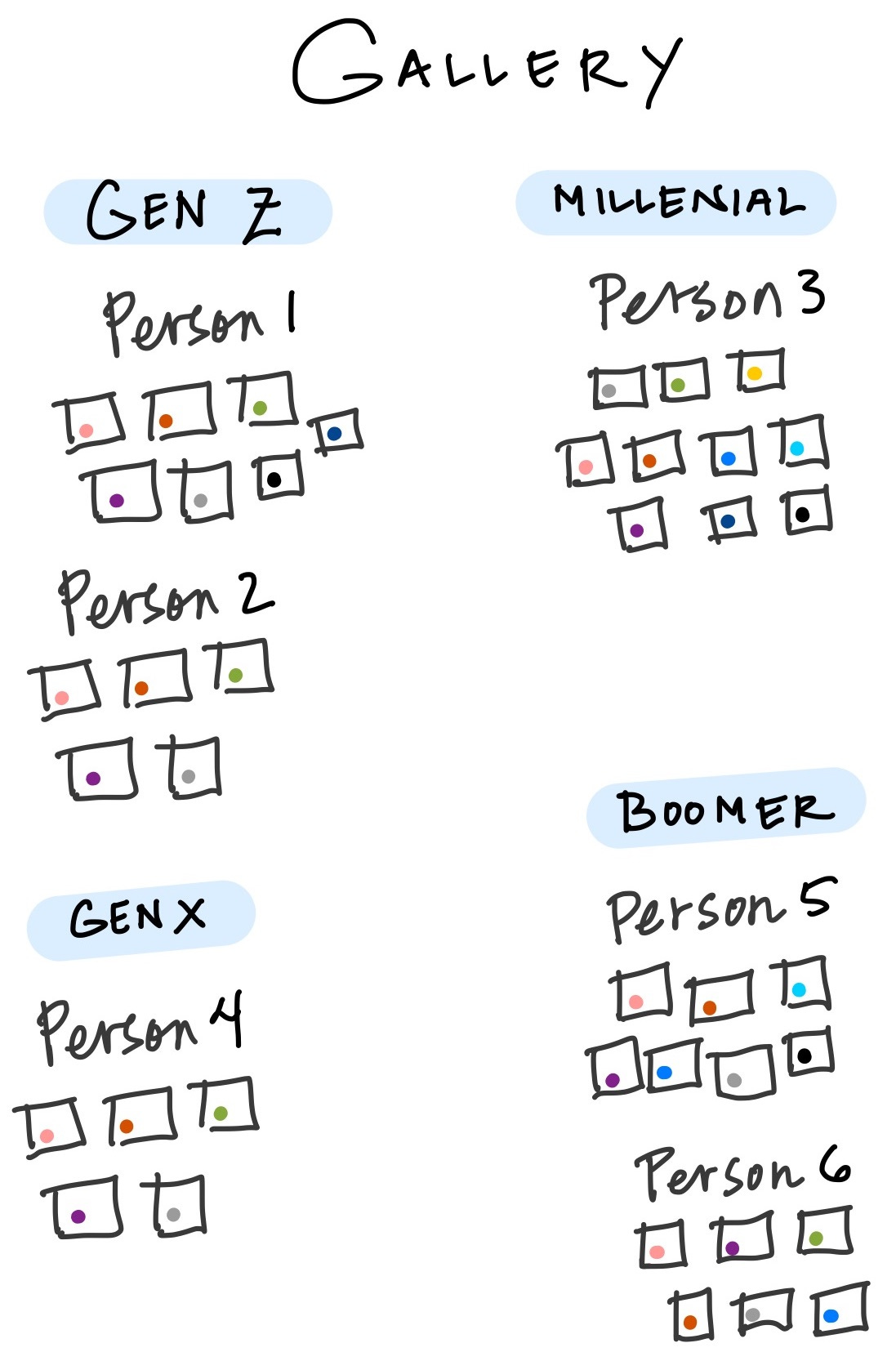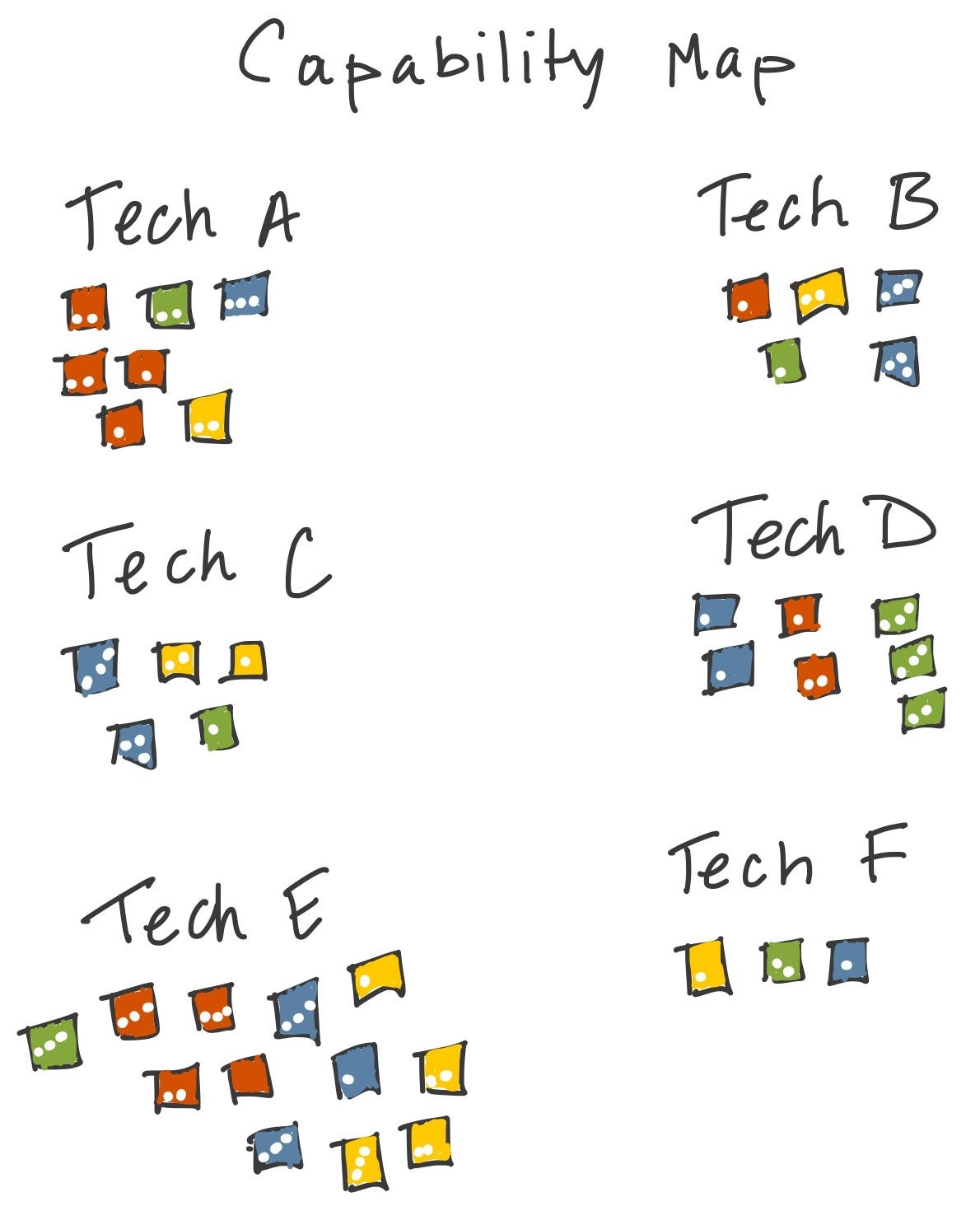Multi-generational workplace challenges
For the first time in modern working, we have 4 generations (sometimes 5) in the workplace, creating multi-generational working or “generation all.” Managing multi-generational teams is an emerging challenge. The generations consist roughly of: Gen Z (~20s), Millenials (30s-eary 40s), Gen X (mid 40s-59), Boomers (~60s+), and Silent Generation (~late 70s+).
Tensions in the multigenerational workforce arise for a variety of reasons. Sometimes stereotypes are faulty. For example, with healthy longevity, more boomers are energetic and professionally active in their 60s and 70s. On the other end of the spectrum, despite having grown up with social media and internet connections, not all ‘digital natives’ are digitally skilled for the workplace.
While late career workers feel age discrimination, entry level workers feel it too. And they’re experiencing a decline in the number of available jobs, partly due to generative AI. Nearly half of workers of all ages surveyed for Linkedin research are worried about being left behind by rapidly changing workplaces.
Meanwhile, recent research (on my other substack, the late career Flyer) highlights that in the last year, 20% of Gen Z workers haven’t had a direct conversation with anyone over 50. Further, 40% of over-55s haven’t spoken directly to a Gen Z colleague either.
Even if you haven’t spotted the multi-generation challenge yet, it’s probably there.
Basic facilitation techniques can help
If you’re facing multi-generational challenges, structured meeting techniques can enhance participation across generations. Let’s say you’re running a meeting to:
get a broad range of ideas from the group
get feedback from everyone on a question/challenge, or
compare notes on your experiences with a certain vendor.
You can use a traditional facilitation technique like ‘silent and solo.’
With ‘silent and solo’, each participant has 2-3 minutes to jot down some thoughts individually, before being asked to share one or more of them with the group. This can help ensure that everyone participates.
Using sticky notes to record thoughts and sharing them on a wall or board can help the team see and work with all the ideas. If you use voting to select ideas for the team to pursue, various voting techniques can help the team avoid common biases in voting.
Diving deeper
If you’re aiming to dive deeper into multigenerational dynamics, consider workshop activities like the ones below. Remember to warm people up in advance. Let them know that you are aiming for a positive experience for everyone and that you anticipate some helpful insights and perhaps innovations in the way you work together. Make sure in advance that all participants are comfortable exploring multi-generational issues.
1. Shared values
Help employees across generations become less wary of their differences, and more appreciative of their similarities. As a warm up, form the participants into a line-up of generations (no ages need be revealed). Give each generation a different color of sticky notes. Next, each person takes a few minutes (silent and solo) to think about their top three workplace values.
The group , or small groups (mixed generationally), share their values and compare the results. Options include:
cluster similar values together and discuss these values (especially if they cross generations), discovering if they interpret similar sounding values the same way
identify any single generation values or one-offs and discuss. For these, the group can ask people holding those values, “how did you come to develop this value?”
step back and consider if the values converge or diverge on generational lines.
2. Technology tracing
Technology skills don’t always align as strictly along generational lines as you might think. In this session you have the group (or groups) map out their actual experiences and skills with technology. This exercise can also be an opportunity to identify training and re-skilling for the team or group.
Have the group develop (or you provide) a list of technical competencies or categories of technology/skill. These can be limited to your current working needs, or can include forecast needs, or perhaps a wishlist for skills. Depending on your industry, some possible list entries could be:
Coding (specific languages)
Generative AI tools (such as Claude, Chat GPT) and if used for writing, images, or video/3D.
Website building (For example using wordpress or similar platform, or from scratch)
Data analysis (big data)
Orchestrating Social media campaigns
Data-based modelling or simulation
Digital video editing
Project management tools
Cloud computing tools
Cybersecurity
Wildcard (decide if you want to let participants add their own types of technologies/skills, even if they aren’t immediately relevant to current work)
Options for this activity include a “gallery” approach or a “capability map” approach, or both.
Gallery: Each person has a section on the board labelled with their name and generation. If possible, you can organise the gallery in generational order. Give everyone the list of categories (such as bullet points above: coding; generative AI…). You can assign each category a specific color of sticky note or if there aren’t enough sticky note colors, use different colored dots on each note to represent categories.
Have people write one technology/skill that they have per sticky note and put it in their gallery for as many as they have. It might look like this, where the color of the dot represents the technology/skill:
After about 5 minutes, have everyone review the gallery for about 5 -10 minutes (depending on size). If people think of new technologies/skills, they can add them to their gallery. After the review, invite comments on:
What the group expected versus what they found
What they learned about colleagues
If there are any generational patterns in the result
What advantage and disadvantages does each generation perceive for their use of a given technology/technical skills
Is there interest in mentoring or ‘reverse’ mentoring (where a younger person mentors an older person)
Capability map—a reverse of the “gallery” in that each category of technology (e.g. the bullet points above: coding; generative AI…) has a section on the board. Each generation has a different color sticky note. People put their name on sticky notes and post them to all of the categories where that person has skill/experience. You could also have them use dots to indicate their expertise, such as 1 dot for ‘some experience’, 2 dots for ‘solid competence’ and 3 dots for ‘expert’ (keeping in mind that women will typically underplay and men overplay their skill). It might look something like this, where say green represents Boomers, orange Gen Z and so on:
At the end you’ll see where the capabilities lie among the categories of technology, and where the generational skills are distributed.
Participants can consider:
Is it what they expected, especially in terms of generations?
Are there skill gaps in the group that should be filled? What kind of training is available for all generations?
What advantages and disadvantages do each generation perceive for their use of technology/technical skills? For example, people from earlier generations are thought to have some advantages with AI because their experience makes them better at spotting AI hallucinations and other errors, as well as better at crafting prompts base on their longer work experiences.
Is there interest in mentoring or “reverse” mentoring (where a younger person mentors an older person)?
What are your experiences running multi-generational teams?
Share in the comments what your experiences have been and whether you’ve tried any facilitated approaches.




